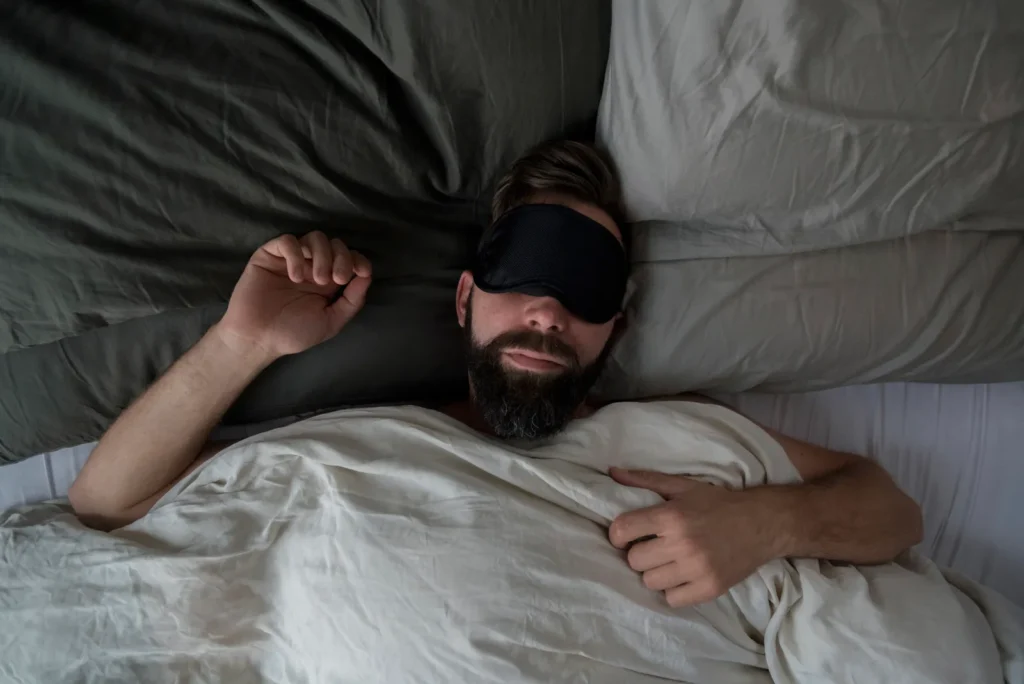
Waking with a jolt like you just dropped off a cliff? You’re not alone. Those “falling into the void” dreams are tied to a real, body-level reflex called a hypnic (or hypnagogic) jerk, a brief muscle spasm that hits as the brain shifts from wake to sleep. They’re common, usually harmless, and—this matters—they cluster at life stages loaded with stress, change, and control issues.
This deep-dive explains what’s happening, why age and life phase influence it, how to tell normal from not-so-normal, and practical ways to cut episodes down. Along the way, you’ll see expert quotes, research-backed insights, quick case studies, and internal link ideas you can use to connect readers to related pages on sleep, stress, and mental health.
Quick take: Most “falling” dreams are benign sleep starts. They flare when your day is noisy—academics in adolescence, job/relationship shifts in early adulthood, role overload in midlife, and health/existential worries later on—then fade when you stabilize routines and stress.
What’s Actually Happening When You “Fall”
- Physiology: A hypnic jerk is a sudden, involuntary muscle contraction that pops up during the lightest phase of sleep onset. The brain sometimes misreads rapid muscle relaxation as “I’m falling,” so you get a vivid drop-and-jolt sequence. This can happen once or in clusters and may or may not wake you.
- Triggers: Sleep debt, caffeine, late workouts, stress, and certain medications can increase frequency or intensity. In otherwise healthy people, they’re considered benign.
- Edge cases: In some individuals, hypnic jerks intensify enough to delay sleep or feed insomnia—especially alongside anxiety, depression, or activating meds (e.g., SSRIs like escitalopram). These are still usually benign but can be disruptive.
Expert voice (AASM Sleep Education): Sleep starts are “sudden, brief, strong contractions” that occur as you fall asleep. Some people also perceive “a sensation of falling.”
Why Age (and Life Stage) Changes the Odds
“Falling” dreams map surprisingly well to the kinds of stress you carry at different ages. The reflex is physiological; the meaning and frequency often ride on psychological load.
Adolescence (≈12–18): Identity, evaluation, and social turbulence
- Teens live in a pressure cooker of grades, belonging, and body changes. That evaluation stress shows up in dreams as threat, failure, or losing control, with falling imagery a common stand-in. Studies of adolescent recurrent dreams consistently find threat and pursuit themes dominate.
- Add late-night studying, gaming, caffeine, or erratic bedtimes, and you’ve stacked the deck for sleep starts.
Early Adulthood (≈19–35): Uncertainty, ambition, and “firsts”
- College, first jobs, unstable housing, new relationships—big swings, few anchors. People in this band report more performance and control dreams when stress spikes. Sleep deprivation and social jet lag (weekend vs weekday schedules) amplify hypnic jerks.
Midlife (≈36–59): Role overload and responsibility creep
- Careers hit stride while caregiving, parenting, and financial stakes climb. That cocktail breeds cognitive arousal at night—rumination and worry—which is tightly linked to sleep onset problems and more disruptive jerks. Meta-analyses and reviews highlight pre-sleep rumination as a strong mediator between daytime stress and insomnia symptoms.
Later Life (60+): Health shifts and existential themes
- Older adults experience changes in sleep architecture, more nighttime awakenings, and sometimes higher baseline anxiety around health or independence. While dream recall can decline with age, awakenings and medication effects can make sleep starts feel more noticeable. (Some studies find smaller age differences in recall than we assume; the picture isn’t one-note.)
- Medications (including some antidepressants) can exacerbate hypnic jerks; if episodes surge after a med change, speak with a clinician.
What “Falling” Might Mean (Psychologically)
Let’s separate symbol talk from sleep science. The jerk is physical. The story your brain wraps around the jerk—the sudden drop, the missed step, the void—is often about control, insecurity, and transition:
- Loss of control in work, school, finances, or relationships
- Fear of failure under evaluation (exams, reviews, public performance)
- Letting go during transitions (graduation, moves, breakups, children leaving home)
- Consequence monitoring—worrying about outcomes of your choices or mistakes
Those themes match how rumination and worry keep the mind “online” at bedtime, raising cognitive arousal and making sleep starts more likely to wake you.
Case Studies (Composite, Research-Aligned)
Case A — Teen exam season, “trapdoor” falls (Age 16):
Z., an honors student, began having nightly falling jolts during exam week—bedtime slipped from 11pm to 1:30am, caffeine went up, and soccer practice ran late. Cutting caffeine after 2pm, a fixed 11:15pm lights-out, and a 10-minute breathing routine reduced episodes within a week. (Mechanism: less sleep debt + lower pre-sleep arousal = fewer disruptive jerks.)
Case B — New manager, 2am cliff-edge drop (Age 32):
M. took a promotion and started waking at sleep onset with a “ledge-slip.” They noticed it happened after late Slack scrolls in bed. We front-loaded planning to 6pm (“worry window”), moved the phone out of the bedroom, and used progressive muscle relaxation (PMR). Result: sleep onset in 15–20 minutes, rare jerks. (Mechanism: breaking rumination loops; lowering muscle tension.)
Case C — Sandwich-generation caregiver, “elevator plunge” (Age 47):
R. managed kids’ schedules and an ailing parent. Jerks came in clusters and started to delay sleep. Two steps helped: a CBT-I–style consistent rise time and a 30-minute wind-down with paper journaling + breathwork. After two weeks, awakenings dropped, and the falling dream faded. (Mechanism: less conditioned arousal at bedtime.)
Case D — SSRI start, “empty-stair” misstep (Age 63):
After starting an SSRI, H. noticed stronger sleep starts and more vivid falling sensations. The prescriber adjusted timing and dose; episodes eased. (Point: medication effects can matter—don’t self-tweak, ask your clinician.)
When to Treat It as a Signal (Not Just a Quirk)
Most people don’t need treatment. Do pay attention if any of these fit:
- Jerks occur nightly or in clusters that meaningfully delay sleep onset
- You develop anticipatory anxiety about going to bed
- You’ve recently changed medications and symptoms spiked
- You meet criteria for insomnia (difficulty falling or staying asleep ≥3 nights/week for ≥3 months) or have daytime impairment
If that’s you, ask a clinician about CBT-I (first-line for chronic insomnia) and review meds and caffeine. For rare cases with severe muscle activity or unusual neurologic signs, a sleep specialist may recommend further evaluation.
Practical Playbook: Cut Down “Falling” Episodes
Think in two lanes: reduce the body’s trigger load, and quiet the mind before lights-out.
1) Stabilize the body (sleep pressure + physiology)
- Keep a stable schedule (7 days): Same wake time daily; bedtime follows from sleepiness, not the clock. This anchors circadian rhythm and lowers startle risk.
- Caffeine cutoff: Last cup ≥8 hours before bed; watch hidden sources (pre-workouts, energy drinks, “PM” pain meds with caffeine).
- Move earlier: Finish vigorous exercise ≥3 hours pre-bed; if evenings are your only slot, go moderate.
- Bedroom basics: Cool, dark, quiet, with a simple wind-down cue (lamp + book) that your brain learns as “sleep time.”
- Medication review: If sleep starts ramped after a new med (esp. activating antidepressants), talk to your doctor about timing or alternatives.
2) Quiet the mind (cognitive arousal + rumination)
- Create a “worry window” (15–20 min, late afternoon): Dump to-dos and “what-ifs” onto paper. Decide the next tiny action, then close the book. This reduces bedtime rumination.
- Evidence-based downshifts:
- Breathing (4-7-8 or 4-6) to bump vagal tone
- Progressive Muscle Relaxation (PMR) to resolve micro-tension
- Brief guided imagery to occupy visual cortex without worry loops
- Screen curfew: Phones outside the bedroom or Focus mode after a set hour. Light + novelty = alerting.
- If wide awake (>20–30 min): Get up, low light, calm activity till sleepy. Don’t wrestle the bed. (Classic CBT-I stimulus control.)
What the Research Says (and How to Use It)
- Hypnic jerks are normal, often paired with a falling sensation. Prevalence estimates vary; educational and clinical sources peg them as common in the general population and exacerbated by sleep deprivation and stress.
- Cognitive arousal is the bridge from daytime stress to nighttime insomnia. Rumination and worry are the big levers to pull. Interventions that shift attention (PMR, imagery) or confine problem-solving earlier reliably help.
- Age patterns: Adolescents report more threat-laden dream content; older adults may recall fewer dreams overall but can notice sleep starts more due to awakenings/meds. The age-dream picture is nuanced, not strictly linear.
- Medications: SSRIs can intensify jerks for some; don’t stop on your own—coordinate care.
Expert voice (Sleep Foundation): Hypnic jerks are common, often harmless, and more likely when you’re sleep-deprived or stressed. Simple hygiene and wind-down strategies help.
Are “falling” dreams dangerous?
No. They’re usually benign sleep starts. See a clinician only if frequency and distress are high or if there’s a med change.
Why do I sometimes yell or flail?
A stronger, full-body startle can happen. If movements are violent, frequent, or paired with confusion, talk to a sleep specialist to rule out other parasomnias.
Can I get rid of them completely?
Not guaranteed, but you can reduce them by stabilizing schedule, cutting late stimulants, and lowering pre-sleep rumination.
Does age make them worse?
Age doesn’t doom you to more jerks; life stage stress and health/med factors are the bigger drivers.
Falling into the void is your brain/body doing a quick handoff into sleep—and sometimes dropping the baton. It’s more common when your life stage loads the day with stress and uncertainty, from exams to promotions to caregiving to health shifts. Treat it like a signal: stabilize your schedule, lower stimulants, and defuse rumination before bed. If it’s nightly or worsening, loop in a clinician—especially after new meds.
You don’t have to white-knuckle bedtime. Small, boring, consistent moves beat the jolt.








